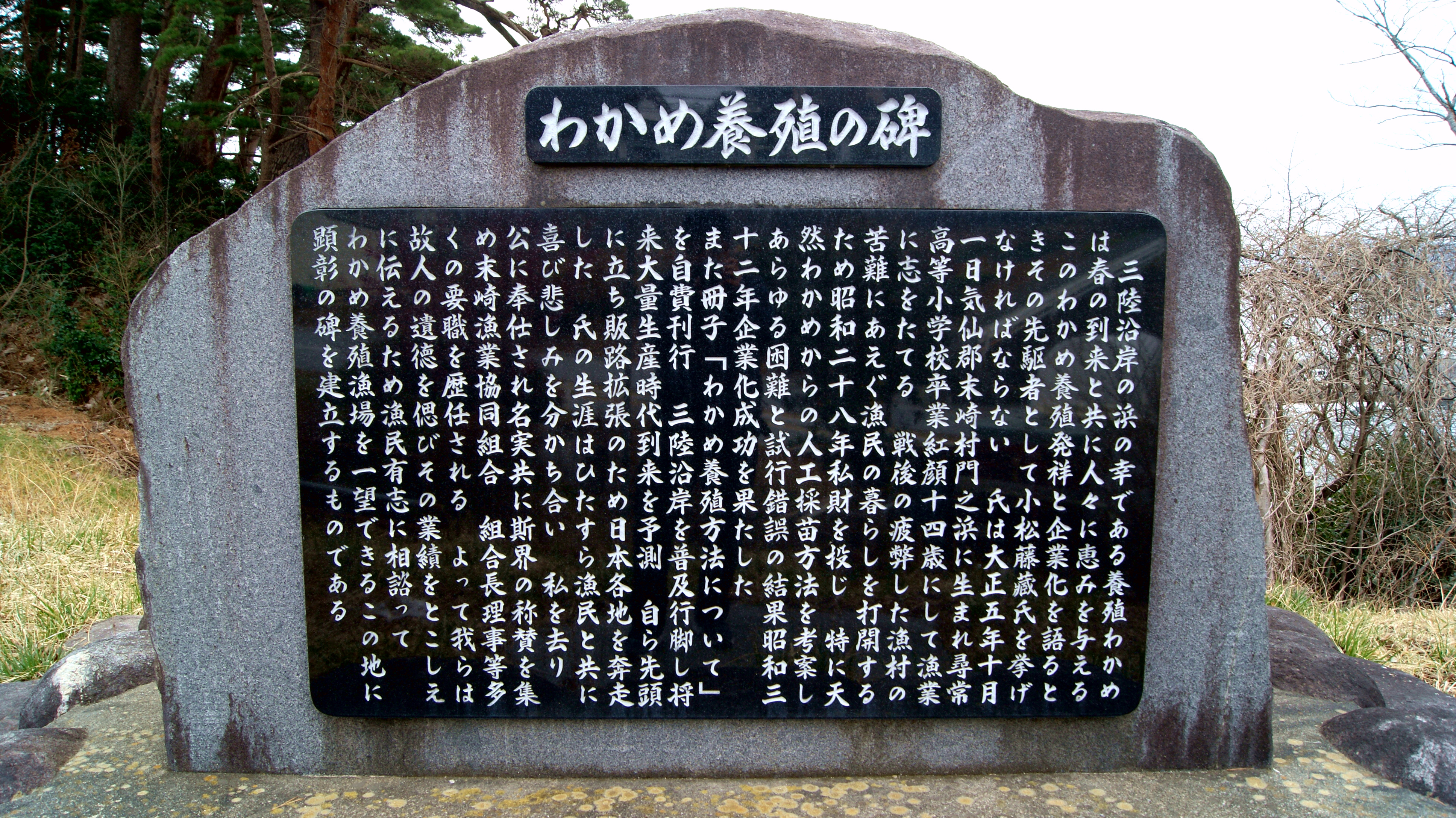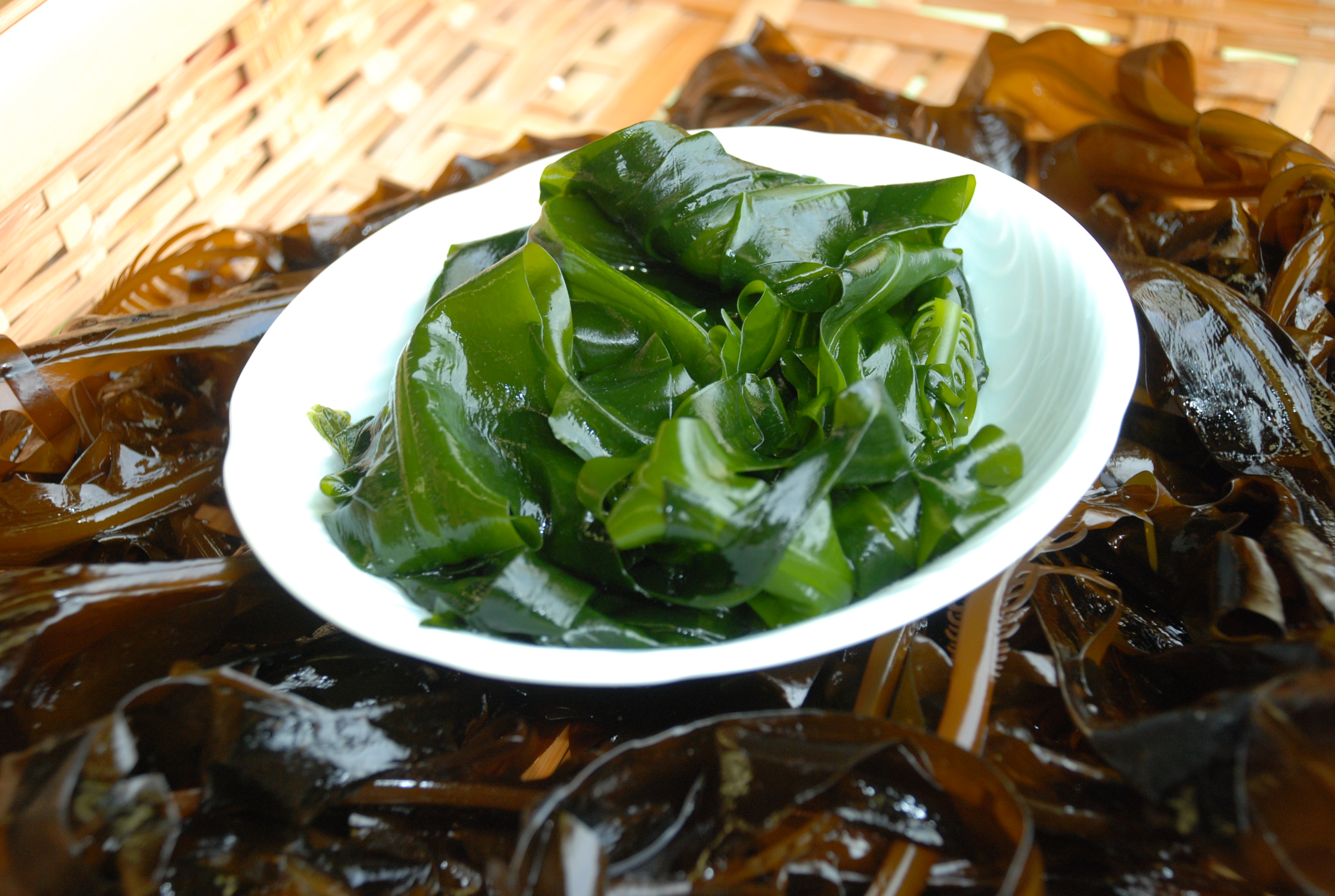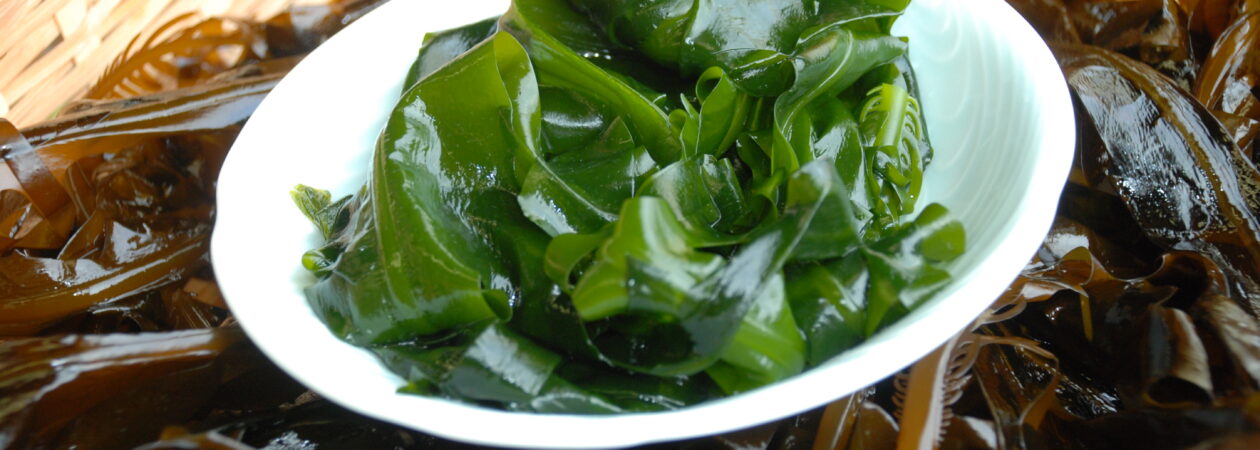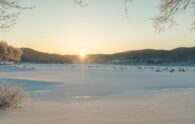As my quest continues to find places to share with everyone, this time I’ve steered away from the cliché tourist spots in order to provide information of places/things/vantage points a tourist may not be able to easily come across if they were to visit.
Upon my journey, I happened to stumble across a robust monument which was located in a hidden place. Well, to be honest it wasn’t quite hidden, just kind of hard to approach since it seems to be on a lawn of someone’s property… [Wakame Cultivation Origin Monument]
[Wakame Cultivation Origin Monument]
This monument, along with the stone sign located to the left (not shown in picture) is a symbol which indicates that this region was the first to originate wakame cultivation and its commercialization.
So, what is this wakame that I speak of? (Those who think they know might learn something new!) The direct translation is indeed “Seaweed”, but did you know that in Japan there are different types of seaweed that are distinctly distinguished?
1. “Nori” is the type of seaweed that is most commonly used to wrap rice balls and/or used to make sushi! They are different to those used in miso soups as these are a kind that grows up to approx. 25cm in length and are very thin. Once they are collected from sea, they are layered and dried to look more like paper or how you see them in the supermarket.
2. “Konbu” is another type seaweed mainly used to create seaweed-based broth. These are said to grow from 4 to 10 meter in length and are generally dried and sold in big packages. Of course, these can be eaten too but those that are, are mostly boiled enough to be soften.
3. Lastly, “Wakame” are the types of seaweeds you see in miso soup and grow up to 2 meter in length. The core of the wakame is stiffer compared to “Nori” and has a texture similar to that of a cartilage. These are usually cut in small sizes and processed through freeze-dry so that you can soak them in water, making them return to the texture and shape everyone is familiar to.
Now, the reason why I’m going so deep into explaining all this is because, as you may or may not know, wakame is one of many delicacies here in the Sanriku region. What’s more is that this area is one of the few places you would be able to get a hold of a raw seaweed before it has been processed. If you are keen on looking out for delicacies, you may have seen a video or two like the one below which dips wakame in hot broth and have it change to a vibrant bright green color.
Anyway, long story short, wakame farming and eating it pre-processed is actually part of a deep culture around these parts. When these seaweeds are in season, it is often eaten in a shabu-shabu style (act of lightly simmering the wakame in hot broth and eating it with ponzu sauce or dips of your choice) to taste the seaweed at its prime. Seeing the color change after its simmered is definitely an experience you will only find here. What’s more is that wakame is rooted in the lives of the locals here. The wakame season is generally around February through late April, and during this time most harbors are full of people harvesting and processing the wakame.
As a matter of fact, seaweed has been gathering quite the attention recently due to its superb health benefits and have been categorized as a “superfood” by many around the world. Unfortunately, the name of the Sanriku Wakame has yet to see its light on the world stage, but this is your chance to see and taste it before it does!

[Background: Raw Wakame, Foreground: Simmered Wakame]
Now, coming back to the monument, I’d like to share with you the origin of wakame cultivation and the details of what’s written within the scripture here. This is unfortunately not the “official” translation, but guessing that there are no other translations available, in hopes that in the near future many will hear of the Sanriku Wakame, I have taken the honor to translate it below.
Wakame Cultivation Monument [Actual Japanese Writing to Follow]
Farmed seaweed (widely known as “wakame” in recent years), is a delicacy of the Sanriku coast and provides blessings to the people along with the call of spring.
When talking about the birth of wakame cultivation and its commercialization, Mr. Tozo Komatsu is a name that will always be mentioned as a pioneer in this field.
Born on October 1, 1916 in Kado-no-hama, Suezaki Village, he stepped into the Fishery Industry at a young age of 14, soon after graduating the compulsory education of the time.
In 1953, he invested in materials in order to help the fishermen of his hometown overcome the hardships after the war.
In particular, he devised a method to collect and grow natural wakame seedling, and after many difficulties and continuous trials and errors, he succeeded in commercializing the method in 1957.
Additionally, he published a pamphlet titled: “About Wakame Cultivation Methods” at his own expense.
He even toured the Sanriku coastline to spread the word and predicted the age of mass-production in the future.
Last but not least, he had taken the lead in expanding sales channels by traveling all over Japan.
His life was spent sharing joys and sorrows with local fishermen, but in the end had left us.
He served the public through multiple positions of local committees and unions, and was highly respected in the industry.
As such, in memory of his legacy, and in order to pass on his achievements to the future, we have consulted to build a monument in his honor at this site which overlooks the wakame cultivation grounds.
Japanese
ワカメ養殖、発祥の地さて、今回は誰もが行きそうな普通の観光地の紹介ではなく、少し隠れたところに位置する場所/物/景色を紹介しようと思い、探索をしてみました。
そんなこんなで私がたどり着いたのは見つけるのが難しい場所にある、ぱっと見少し場違いな石造で作られた記念碑です。とはいえ、隠れているとまでは言わないものの、どなたかの庭にあるかのように思う為、少々近寄りがたいだけです。
写真①
[ワカメ養殖発祥の地の記念碑]
この記念碑、そしてその左に位置する標識(写真には写っていない)はこの地域がワカメ養殖とその企業化を発祥した地だと宣言するためのものです。
そもそもこのワカメとは何なのか。(もしかすると既に知っている人も新しいことを学べるかも知れません!)直訳はシーウィード(海藻)で間違いないものの、日本では様々な海藻が存在していることをご存知ですか?
1 「ノリ」といった海藻の一種の多くはおにぎりやお寿司で使われるのがほとんどです。これらは一般的な味噌汁に使われるのとは違って、海でも25cm程しか伸びず、比較的薄いです。また、収穫後は重ねられて乾かし、紙のように形を整えて売られています。
2 「昆布」もまた違った種類の海藻であり、一般的には出汁を取る為に使用されています。海底では昆布は4~10mまで伸びるのが一般で、乾燥された状態で販売されております。もちろん、出汁だけではなくじっくりと煮込んで食されることも多々あります。
3 最後に今回の「ワカメ」は味噌汁に使われるのが多く、海水ではおよそ2mの長さに伸び、のりなどに比べるとちゃんとした触感があり、中心部は軟骨などのようにコリコリしています。これらは小さめに切られたうえでフリーズドライ加工が施された状態で販売されており、水につけ、元の状態に戻した上で使用されます。
それは良いとして、何故急にこんなに説明しているのかというと、ワカメは三陸地域の文化の中に昔から深くって根付いている食材の一つであるからです。更に、この地域は生ワカメが手に入る場所であり、美味しい地元の食材を求めている人であれば下の動画のように一瞬で鮮やかな色に変わる動画の一つや二つは見たことがあると思います。
単刀直入にいうと、ワカメの生産地の一つであるこの地域にはワカメの収穫だけではなく、養殖と加工される前に食すことが昔から習慣として残っています。ワカメの季節が訪れる際にはしゃぶしゃぶ風(熱湯で軽く火を通し、ポン酢や様々な味付けで食べる行為)で新鮮なワカメを食べられるのが多いです。動画のように一瞬で色が変わるのを間近で見るのは非常に興味深く、ここらでしかできない体験です。また、ワカメは2月から4月末が旬の時期ですが、その時期の港は ワカメの収穫や加工で人が多く集まります。
更に、ワカメという食材は最近世界中からその栄養の多さを理由に「スーパーフード」として注目を浴びています。残念ながら「三陸ワカメ」の名は世界中にはまだ知れ渡っていませんが、そうなる前にここで見て食べてみること強くお勧めします!
写真②
[うしろ:生ワカメ、まえ:加熱後のワカメ]
長くなりましたがここで、最初に話した記念碑に戻って来るわけですが、そこにはこのワカメ養殖の文化の始まりと言える記述が書いてあります。公式の英訳ではないものの、その内容を少しでも世界に共有し、多くの方に三陸ワカメの事が知られるように、恐らく初めての英訳文として以下に記載して置きます。
ーーーーーーーーーーーーーーーーーーーーーーーーーーーーーーーーーーーーーーーーーーーーーーーーーーーー
わかめ養殖の碑(ひ)
三陸沿岸の浜の幸である養殖わかめは春の到来と共に人々に恵みを与える。
このワカメ養殖発祥と企業化を語るとき、その先駆者として小松藤藏氏を挙げなければならない。
氏は大正5年10月1日気仙郡末崎村門之浜に生まれ尋常高等小学校卒業、紅顔14歳にして漁業に志をたてる。
戦後の疲弊した漁村の苦難にあえぐ漁民の暮らしを打開するため昭和28年私財を投じ、
特に天然わかめからの人工採苗方法を考案し、あらゆる困難と試行錯誤の結果昭和32年企業化成功を果たした。
また、冊子「わかめ養殖方法について」を自費刊行。
三陸沿岸を普及行脚し、将来大量生産時代到来を予測。
自ら先頭に立ち販路拡張のため、日本各地を奔走した。
氏の生涯はひたすら漁民と共に喜び悲しみを分かち合い、私を去り、
公に奉仕された名実共に斯界の称賛を集め末崎漁業協同組合、組合長理事等多くの要職を歴任される。
よって、我らは故人の遺徳を偲び、その業績をとこしえに伝えるため漁民有志に相諮って、わかめ養殖漁場を一望できるこの地に顕彰の碑を建立するものである。



